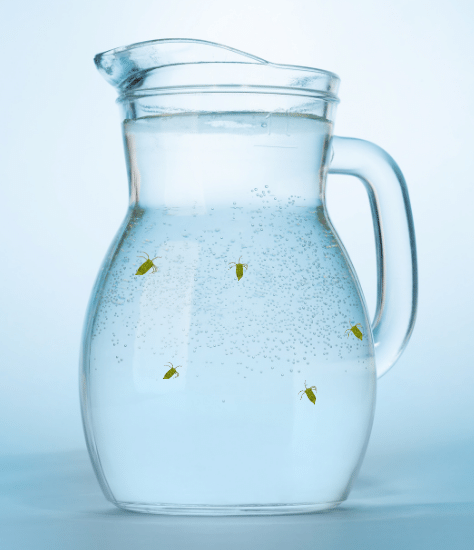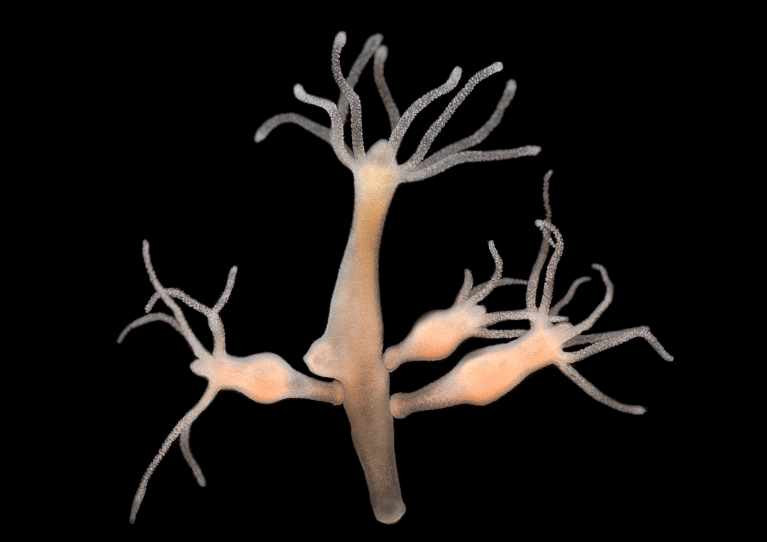2. Observe live hydra yourself and learn how they reproduce by doing the following activity: During the summer months collect water weeds from ponds or ditches along with the pond water and put them in a glass jar. After a day or so you may see several hydra clinging to the sides of the jar. Hydra is transparent, jelly-like and with tentacles. It clings to the jar with the base of its body. If the jar is shaken, the hydra will contract instantly into a small blob, at the same time drawing its tentacles in. Now take out few hydras from the jar and put them on a watch glass. Using a hand lens or a binocular or dissection microscope, observe the changes that are taking place in their body. Note down your observations.
Answer:
The above activity can be carried out as follows:
Aim: To observe the changes taking place in the body of hydra and make conclusions based on that.
Materials Required: Pond water (with water weeds), jar, watch glass, dissection microscope.
Procedure:
(i)During the summer months collect water weeds from ponds or ditches along with the pond water and put them in a glass jar.
(ii) Observe the hydra after a day or two.
(iii) Shake the jar and observe what happens to the hydra.
(iv) Now take out few hydras from the jar, put them on a watch glass and observe them through the dissection microscope.Observe the changes that are taking place in their body.
Observations:
The following observations were noted: After a day or two several hydra were clinging to the sides of the glass jar.

- When the jar was shaken the hydra contracted instantly into a small blob, at the same time drawing its tentacles in.
- Under the microscope it was seen that the hydra had small outgrowths coming out of its body.

Conclusions: We conclude that hydra reproduces asexually via small outgrowths called buds from its body. The buds develop into new individuals coming from a single parent hydra. This type of asexual reproduction is called budding.
“Observe live hydra yourself and learn how they reproduce by doing the following activity: During the summer months collect water weeds from ponds or ditches along with the pond water and put them in a glass jar. After a day or so you may see several hydra clinging to the sides of the jar. Hydra is transparent, jelly-like and with tentacles. It clings to the jar with the base of its body. If the jar is shaken, the hydra will contract instantly into a small blob, at the same time drawing its tentacles in. Now take out few hydras from the jar and put them on a watch glass. Using a hand lens or a binocular or dissection microscope, observe the changes that are taking place in their body. Note down your observations.” – Solved.
Related Links:
Solution to Extended Learning Problem 1
Solution to Extended Learning Problem 2
Solution to Extended Learning Problem 3
Solution to Extended Learning Problem 4
Solution to Activity 6.1
Solution to Activity 6.2
Solution to Activity 6.3
Solutions to Chapter 6 Reproduction in Animals


